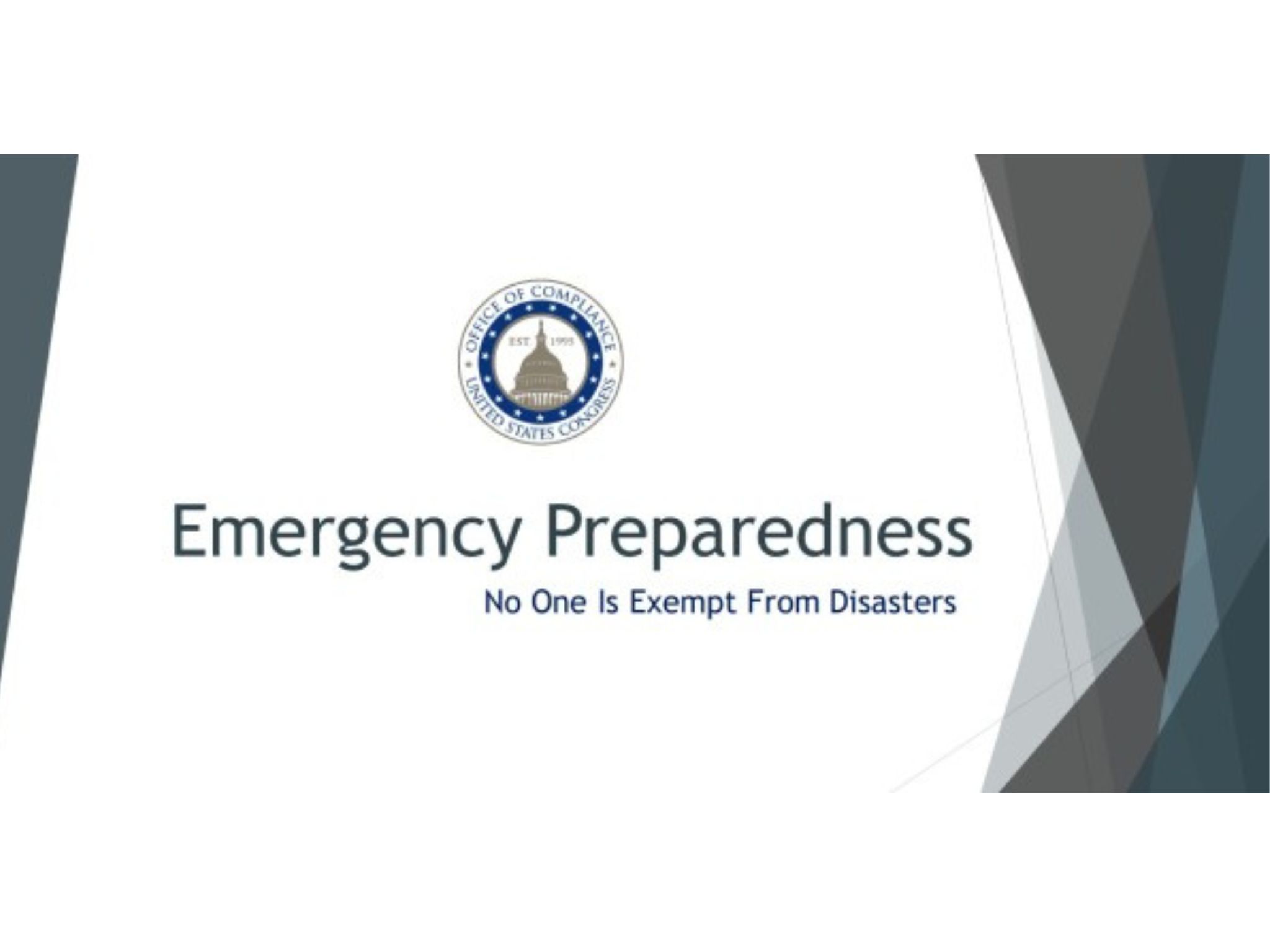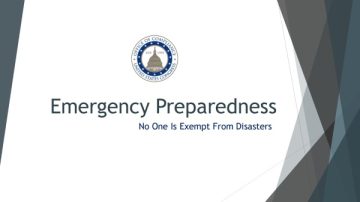Objectives
Emergencies can occur at any time and with very little warning. This training is designed with the goal of achieving the following objectives to familiarize you with the basics of Emergency Management and to stress the importance of preparedness:
- Emphasize Necessity
- Raise Awareness
- Educate
Why Should We Be Prepared?
- Legal requirement to establish and implement a plan to protect employees during emergencies in the workplace
- Reduces fear and anxiety among employees
- Protects people, assets, and production time
- Allows for the continuation of organizational operations
- Ensures adequate supply of emergency resources
- Your life is important!
Fundamentals of Emergency Planning
The Emergency Management Cycle is comprised of four distinct phases:
- Mitigation
- Preparedness
- Response
- Recovery
Mitigate
Mitigation is the process of eliminating a vulnerability or controlling the level of risk associated with it.
This can be accomplished by:
- Inspecting the workplace and researching historical events that have occurred in your region.
- Identifying existing and potential hazards and the vulnerabilities in your workplace that could be negatively impacted by the hazard.
- Implementing changes and procedures that would eliminate the vulnerabilities or lessen the impact of the risk associated with them.
Prepare
Preparation addresses the affected environment after mitigation has occurred.
Preparation consists of:
- Creating and implementing an Emergency Action Plan (EAP).
- Effectively training employees regarding the EAP and conducting live drills and exercises.
- Procuring necessary resources and supplies and coordinating with stakeholders such as Emergency Management offices, USCP, local government officials, and first responders.
Response
Response phase is the culmination of work that was conducted during the mitigation and preparation phases.
It involves:
- Initiating the EAP.
- Conducting life saving operations..
- Coordinating with USCP, state and local government, and private sector stakeholders.
- Restoring key utility and power services and continuing an organization’s mission essential functions.
Recovery
Recovery is the process of assessing the impact of the emergency and examining the execution of response operations.

